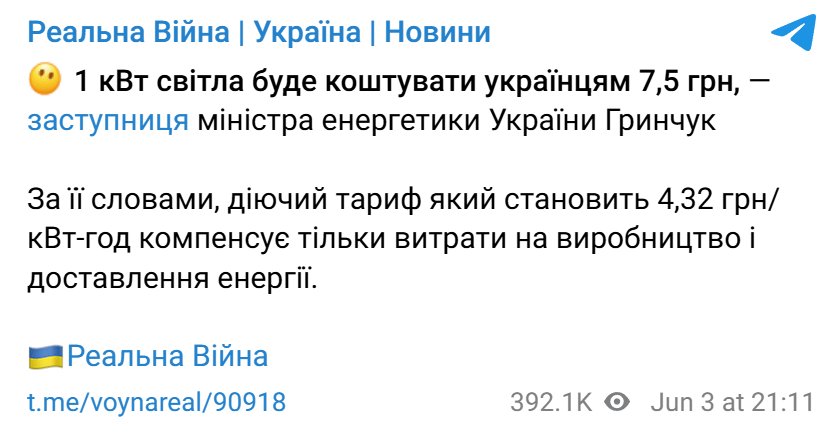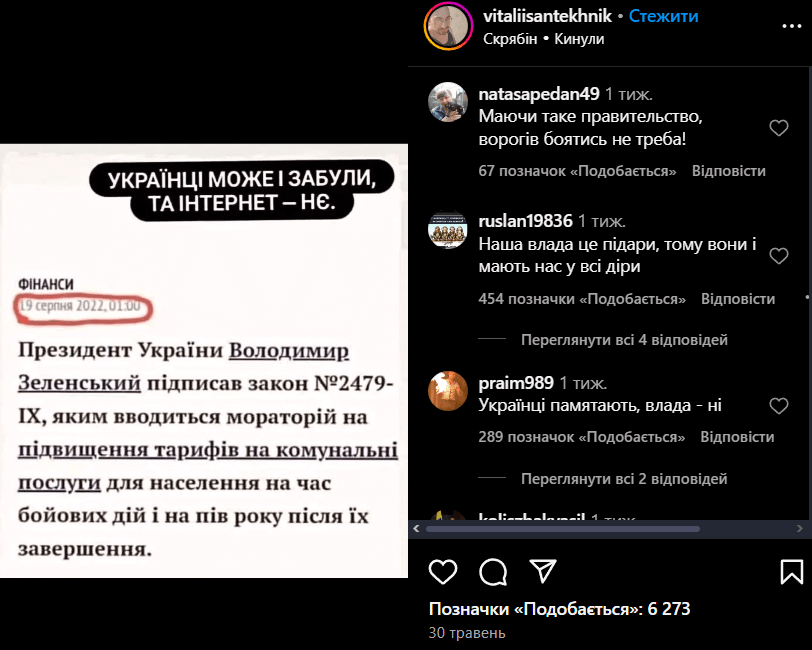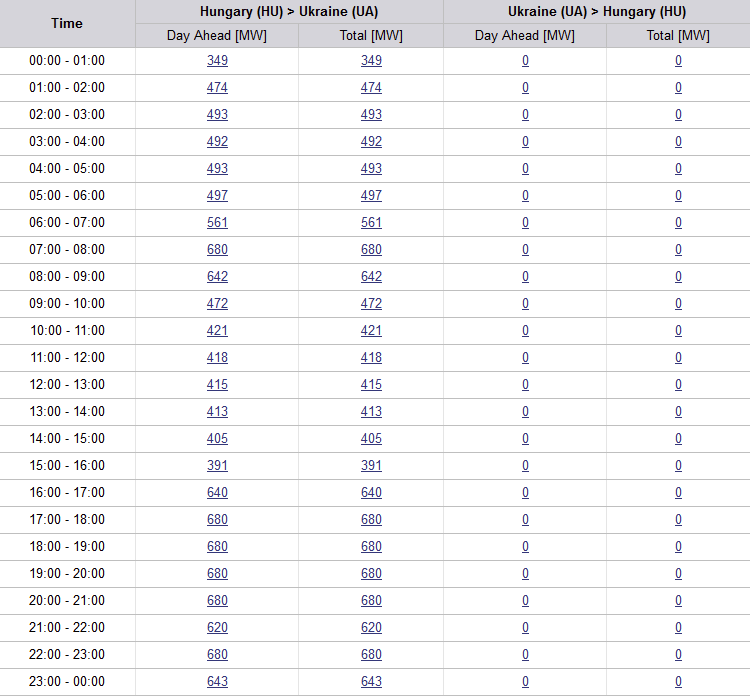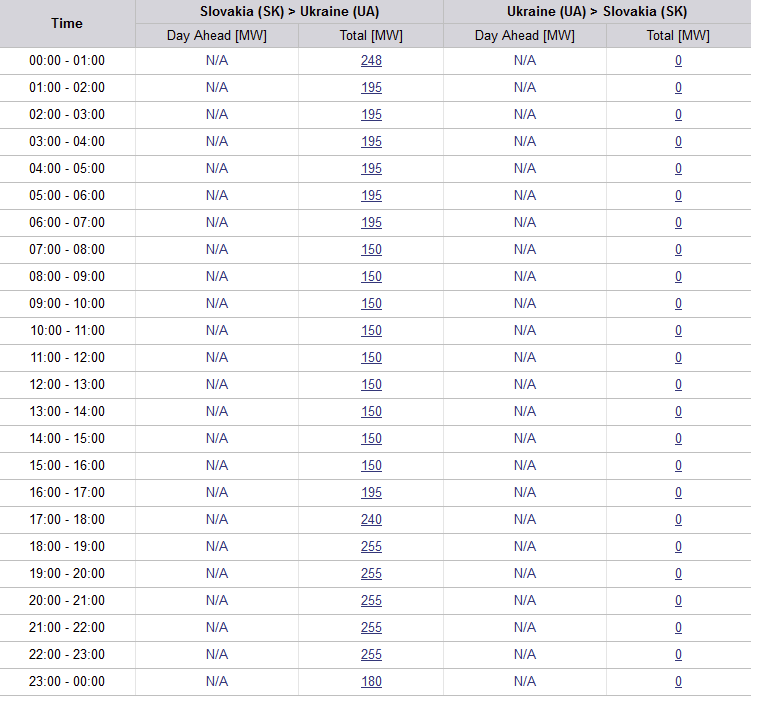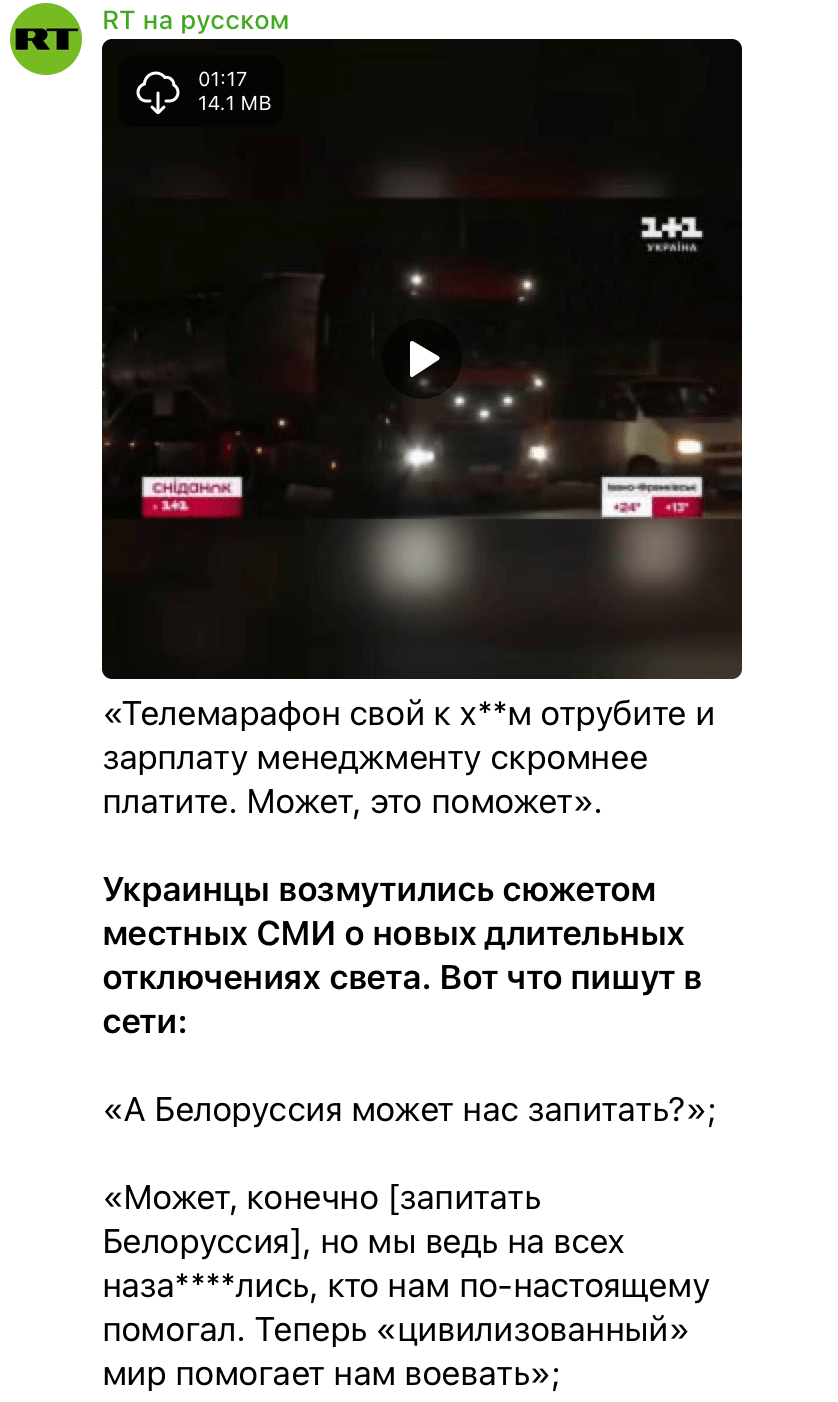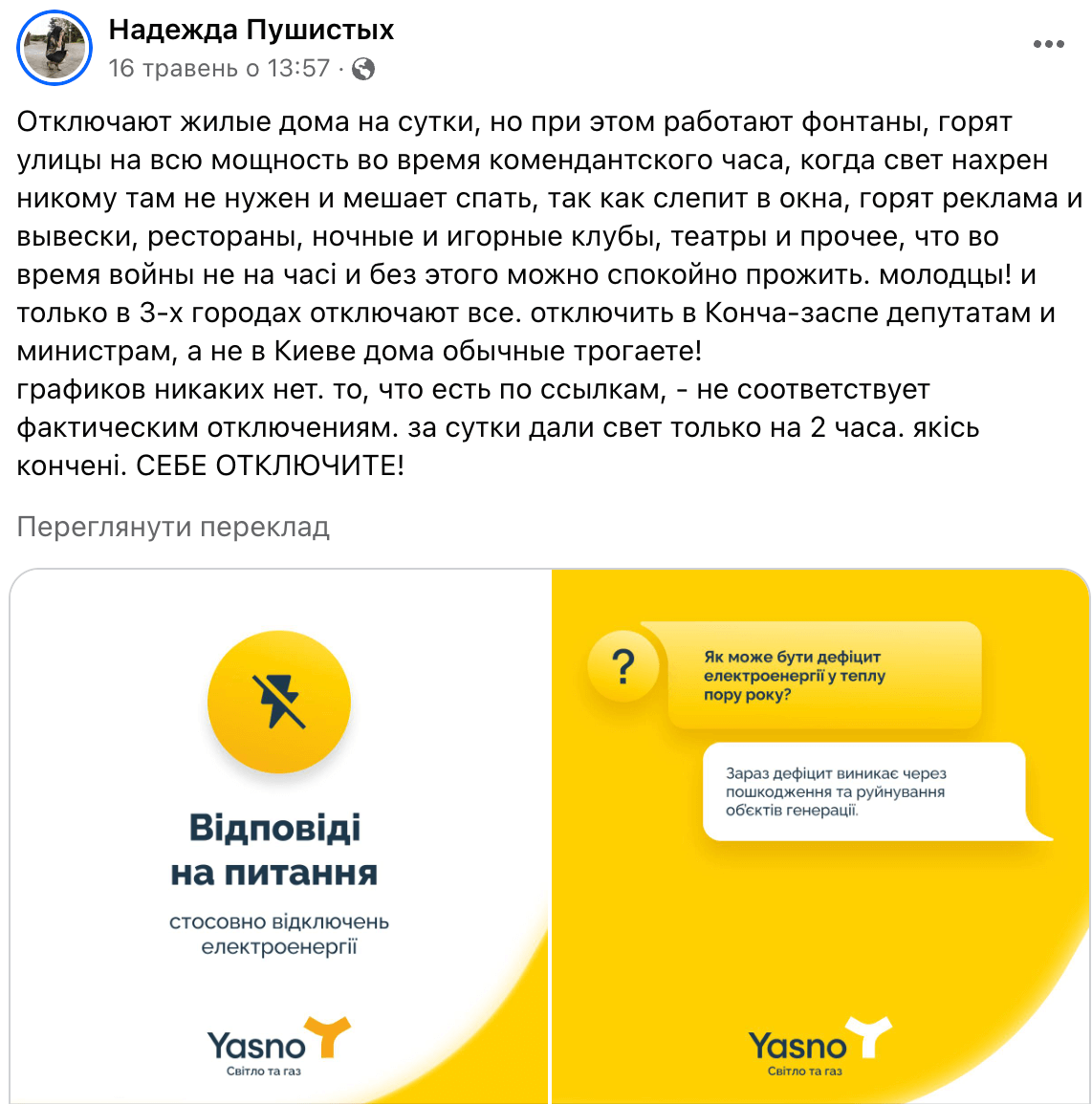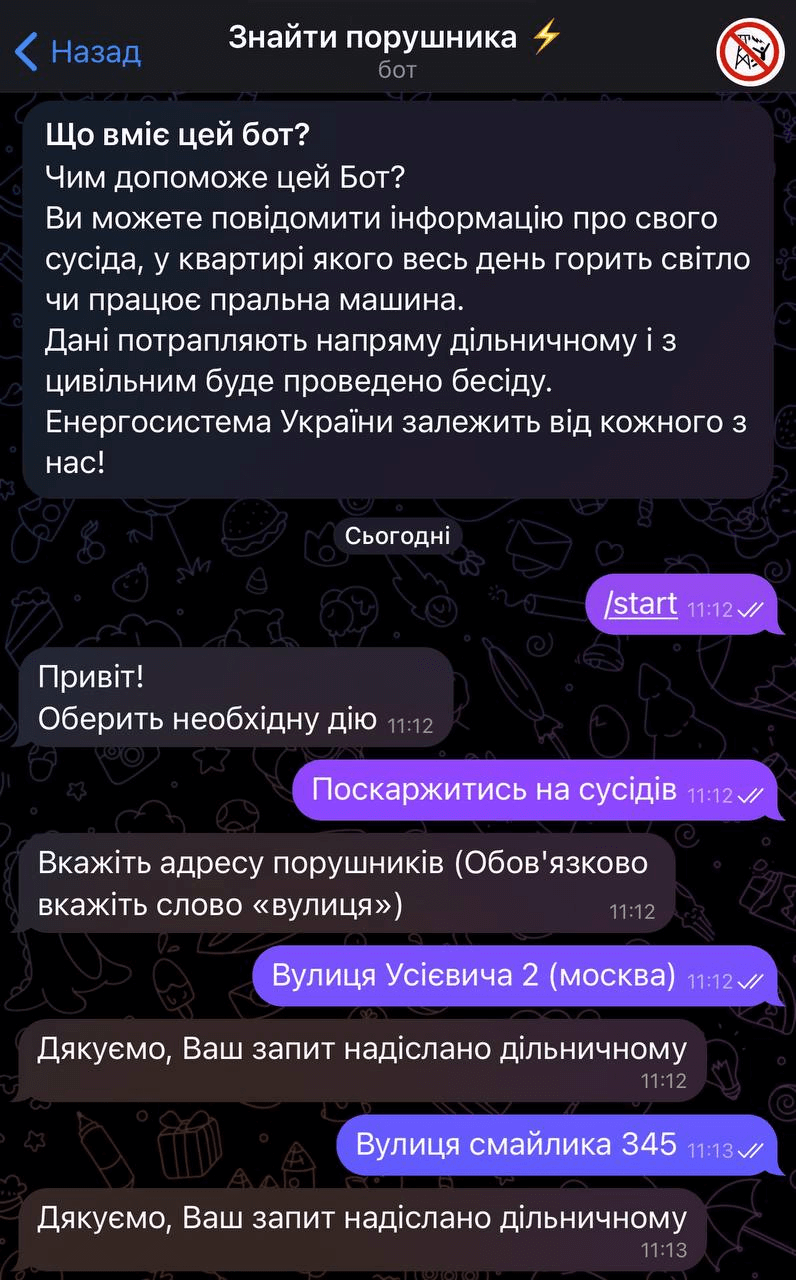Due to Russian shelling, Ukraine is returning to regular power outage schedules. Along with this come numerous fakes and manipulations. VoxCheck analyzes the latest misinformation about electricity and explains: we need to save electricity, but definitely not critical thinking.
During the spring wave of shelling by Russian missiles and drones alone, Ukraine lost 9.2 GW — about half of the generating capacity it had last winter. For comparison, this is more than the entire generation capacity of Slovakia, and also more than the combined generation capacities of Estonia and Lithuania. The consequences for Ukraine’s energy system are the most devastating since the start of the full-scale war. However, Ukrainians are not only threatened by outages but also by a new wave of disinformation. Social media is rife with manipulated news about electricity prices, accusations against everyone but the Russians for the outages, and demands to cut off power exclusively to “deputies’ children”. VoxCheck analysts explain how to verify information about electricity.
No, electricity prices are not going to increase to 7.5 UAH right now
The first rumors come from anonymous Ukrainian Telegram channels. Incorrect news summaries and clickbait headlines are typical for them. Last week, posts asking “Will the price of 1 kWh of electricity be 7.5 UAH?” garnered a lot of negative reactions.
Screenshot of the post
In reality, there are no plans to raise electricity prices again in the near future. Since June 1, the tariff for household consumers has been 4.32 UAH/kWh. There are also additional tariffs, such as 2.64 UAH/kWh during the heating season for homes equipped with electric heating systems, or a night tariff of 2.16 UAH with a two-zone counter installed.
This price is valid until April 30, 2025. Whether it will be reviewed next year is still unknown. The government has the authority to extend preferential tariffs.
The speculation about 7.5 UAH/kWh arose from a misinterpretation of a comment by the Deputy Minister of Energy of Ukraine, Svitlana Hrynchuk. She explained that the market price of 1 kWh is 7.5 UAH. The current tariff of 4.32 UAH only covers the production cost of 1 kWh by Energoatom and Ukrhydroenergo, as well as the transmission and distribution of electricity.
Price increases are not against the law
A common argument after any increase in utility prices is “this is prohibited by law!” This time, social media users even cited Law No. 2479-IX, claiming it imposes a moratorium on tariff increases during martial law.
Screenshot of the post
However, the mentioned document does not pertain to electricity prices.
On August 18, 2022, the president signed Law No. 2479-IX, which regulates relations in the natural gas market and in the field of heat supply. In Ukraine, there is a moratorium on increasing tariffs for thermal energy (its production, transportation, and supply) and hot water supply services for all consumer categories during the period of martial law and for six months after its end. However, this prohibition does not extend to electricity.
The Price for the population is not inflated
Another argument is that “electricity for people should be cheaper or almost free”. Russian and pro-Russian channels have widely spread claims that its cost is much lower, and “Energoatom” simply wants to make “superprofits”. They cite suspicions of state treason against Member of Parliament Oleksandr Dubinskyi: the cost of nuclear generation is purportedly 0.54 UAH/kWh, while the tariff is 4.54 UAH/kWh, implying “Energoatom” profits 4 UAH per kWh, totaling 3.4 billion UAH per month.
In reality, this is not accurate. As of December 2023, the production cost of 1 kWh at nuclear power plants was reported as 1.08 UAH by the Ministry of Energy in response to inquiries from “Batkivshchyna” MPs. It is likely that the production cost is even higher now. However, this is only a partial cost that includes expenses solely for production. Additionally, the price of a product or service also incorporates distribution costs and any other expenses necessary for its sale. In the case of electricity, this includes the costs of transportation, i.e., distributing energy across regions and transmitting it through “Ukrenergo” networks, and finally, supplying it to end consumers. Beginning in 2024, the following tariffs are in effect:
- distribution: from 0.061 to 2.630 UAH/kWh (depending on the region and voltage class);
- transmission: 0.528 UAH/kWh;
- supply: from 0.08 to 0.209 UAH/kWh (depending on the supplier).
Furthermore, Value Added Tax (20%) is added to each tariff. When everything is summed up, the cost exceeds 4 UAH/kWh.
Moreover, the market price for electricity is even higher because it is based on the wholesale price at which suppliers purchase energy on the market. For instance, on June 1st, the weighted average market price was 4.5 UAH/kWh. Therefore, to calculate the market price, transportation costs need to be added to this amount, not to the production cost. This results in approximately 7 UAH/kWh.
The difference between the market price and the cost of electricity for residential consumers is compensated by “Energoatom” through the Public Service Obligation (PSO) procedure. PSO imposes special obligations on certain market participants, in this case, on “Energoatom” and “Ukrhydroenergo”. These companies are required to supply electricity to the population at fixed prices and compensate the difference between the fixed and market prices to other participants.
Thus, there is no question of any “superprofits” for “Energoatom”. The funds received will go toward debt repayment and enable the company to continue fulfilling its obligations to other energy companies.
Electricity is NOT sold to Europe
Conspiracy theories are another common phenomenon during crises, whether pandemics, wars, or mass power outages. Some theories are outright absurd, such as “as soon as Ukrainians turned on generators, the government started talking about raising fuel taxes” (in reality, tax increases were planned long ago) or “electricity is being shut off to manipulate public consciousness”.
The theory about selling electricity — that there is enough energy, but it is sold to European countries — has proven to be the most persistent. So much so that in 2022, Yuliia Tymoshenko voiced this fake theory during a telethon. In 2024, Russians and “useful idiots” returned to this topic.
To track the export and import of electricity between Ukraine and neighboring countries, we use information from the European Network of Transmission System Operators for Electricity (ENTSO-E). Ukraine became part of it at the beginning of the full-scale invasion. Under the “Scheduled Commercial Exchanges” tab, which shows commercial transactions, i.e., buying or selling electricity, we see that Ukraine only buys it.
Import of electricity from Hungary to Ukraine. June 6, 2024. Source: ENTSO-E
Import of electricity from Slovakia to Ukraine. June 9, 2024. Source: ENTSO-E
At the same time, as evidence of exports from Ukraine, the “Cross-Border Physical Flow” tab is shown which demonstrates the results of system balancing. When energy systems are interconnected, there is a phenomenon known as “technical flows”. This is a natural occurrence governed by the laws of physics. Typically, these flows are insignificant. However, the hourly balance is almost zero: we immediately return as much as we give abroad. This is necessary for the stability of the energy system and to stabilize the electricity situation in case of problems.
Ukraine also manages this despite significant destruction of our energy infrastructure due to Russian shelling. These flows allow us to balance our own energy system. Even under these conditions, Ukraine retains a portion of the electricity during flows. For example, on June 6, 2024, within ENTSO-E, we received 24.9 MW while exporting only 4.3 MW. Or on June 9, Ukraine received 33.1 MW but returned only about 11 MW.
Similar actions are taken not only by Ukraine. For instance, on May 26, 2024, Ukraine provided emergency assistance to Poland — receiving surplus electricity from Poland’s energy system.
According to Denys Shmyhal, Ukraine can currently import no more than 1.7 GW per day, but the government aims to increase this to 2.2 GW.
Anonymous sources are not always right
To advance a particular thesis while avoiding sounding baseless, Russian news resources often present information citing “reliable sources”, “credible insiders”, or “individuals close to the Bankova”. This allows them to spread any news, even the most absurd. Telegram channels frequently use this tactic, particularly to stoke fear and panic due to the electricity shortages caused by Russian shelling.
It creates an interesting situation when an anonymous public reference relies on another anonymous source. In such reports, predictions from “experts” tend to be extremely apocalyptic. Commentators often act as prophets, claiming to “know for sure” what to expect: “there will be no electricity in Ukraine in winter at all, businesses will shut down, people will break borders and leave”. Even energy experts cannot confidently predict the situation in Ukraine’s energy system. But the anonymous expert on Telegram or TikTok knows exactly how the winter of 2024-2025 will unfold. Thus, the main message from these pseudo-experts boils down to a simple thought: it’s worth leaving Ukraine because it will only get worse.
However, referencing anonymous sources is not unique to Russians; international media outlets also frequently resort to this tactic. For instance, the Financial Times published an article detailing Ukraine’s energy system’s condition after numerous Russian bombardments. The article provides accurate data on the disabling or destruction of most of the energy infrastructure, including the loss of 9.2 GW of generation.
Yet, there are exaggerations: the Financial Times stated that electricity tariffs doubled. In reality, the increase was 64%, from 2.64 UAH to 4.32 UAH per kWh. Anonymous sources were also involved here. One Ukrainian official, speaking on condition of anonymity, stated, “We should prepare for life in the cold and the dark“. Subsequently, his comments about power outages during most of the day in winter made headlines in Ukrainian media.
The Ministry of Energy stated that the Financial Times article exhibits signs of an Information-Psychological Operation (PSYOP) designed to advance Russian narratives. However, it’s premature to label it as such. Not all critical or negative reports are intentionally harmful. The primary goal of PSYOPs is to influence society by spreading destructive narratives. Sometimes, unpleasant or inaccurate information emerges due to unconscious mistakes in reporting or a desire to prepare the audience for worst-case scenarios (even if they don’t become real).
Journalists at the Financial Times may have misinterpreted speakers’ words, or “officials” may have expressed personal assumptions without real-world confirmation. This underscores the biggest problem with anonymous sources. On one hand, anonymity is justified because it allows speakers to speak freely. However, anonymous sources can also make untrue, manipulative statements or express personal opinions rather than reflecting the actual situation. Moreover, questions remain about whether such an expert has sufficient competence to discuss a specific topic. Therefore, it’s not advisable to fully trust anonymous sources.
Ukrainian energy experts appear more optimistic than these “officials” with whom the Financial Times spoke. According to Volodymyr Omelchenko, Director of Energy Programs at the Razumkov Center, there will be a significant electricity deficit in winter, but Ukraine is prepared for it. “The deficit will be partially covered by imports, and we will also install small-scale generation [distributed maneuverable capacities],” he explained. However, the integrity of the energy system will be preserved.
Serhii Kovalenko, CEO of Yasno, indicated that under an optimistic scenario, the daily deficit in winter will not exceed 25%, while under the worst-case scenario, it could reach 30-35%. These forecasts align with statements from Oleksandr Harchenko, Director of the Energy Research Center, who mentioned that if the currently restored energy facilities are protected, nationwide electricity restrictions will average 4-6 hours per day. However, if these facilities are damaged again, there could be 10-12 hours of electricity absence per day.
All experts emphasized that numerous factors will affect the energy system’s condition: weather conditions, Russian shelling, electricity consumption levels, and imports from Europe. Therefore, making accurate forecasts at this time is impossible.
“Children of Deputies” can also have their electricity cut off
As a result of widespread power outages, we face a range of household problems and spend a lot of time and effort dealing with them. Fatigue and irritation set in, which the enemy provoked and then exploited to sow discord in society. It is precisely in such a state that the psyche is more susceptible to informational influence and accepts advantageous Kremlin agitprop theses.
Russians use complaints about power outages on social networks and controversies based on this ground for their own purposes, attempting to shift blame onto Ukrainians themselves. Propaganda pushes the narrative that we find ourselves in a difficult situation not because of crimes committed by Russia, but due to the actions (or inaction) of the authorities. For example, RT propagandists published reactions from Ukrainians under a story on the “1+1” channel, which reported that the power would be turned off for longer periods. Commenters asked whether Belarus could help compensate for the electricity deficit and supply power to Ukrainian territory, blaming the government for frequent outages, allegedly redirecting funds to telethons instead of restoring energy.
Screenshot of the post
Similar publications appear in the Ukrainian segment of social media — shared by both genuine users and Kremlin-paid bots and propagandists. The latter seize on provocative posts and boost their popularity with their likes and comments. While in the case of fake mobilization messages, the popular refrain was “let deputies’ children fight,” this time they call for cutting off electricity to deputies, officials, or energy workers.
Screenshot of the post
Playing on exhaustion, Russians tune Ukrainians against each other. For instance, Russian Telegram channels spread a fake story claiming that a bot called “Find the Violator” was activated in Ukraine. Its main goal supposedly is to collect “reports” on neighbors. Thus, anyone without electricity could write to the bot about a neighbor who has lights on all day. The bot allegedly forwards this information to a local officer who should “have a talk” with this person.
Screenshot of the post
This bot does exist on Telegram. However, it was likely created by Russians to discredit Ukrainians or for humorist purposes among other users. The bot does not ask for any personal data that could verify the user — like a phone number or personal account number assigned when signing a contract with an electricity provider. It simply replies with “Thank you, your request has been forwarded to the local officer” to any address, even a Russian or non-existent one.
Screenshot of the response of the bot “Find the Violator”
In reality, there are no “privileged” electricity consumers. They are all divided into two groups — critical infrastructure and other consumers (household users, businesses). Each group is connected to a specific power line that is alternately turned off and on. Specific houses are not switched off individually; entire lines and everything connected to them are affected. Therefore, if certain houses are never turned off, they are likely on the same line as critical infrastructure such as hospitals, water supply facilities, emergency services, etc., which are prioritized for power. These houses cannot always be easily switched to another line, and manually switching them off is time-consuming. Additionally, some consumers may have electricity at home through generators or charging stations.
Conclusion: Saving electricity, not critical thinking
Even with optimistic forecasts this year, we cannot avoid power outages. However, each of us can help reduce the deficit by following basic energy-saving rules. During peak consumption hours (approximately from 8:00 to 11:00 and from 17:00 to 23:00), it is not recommended to use energy-intensive appliances such as electric stoves, water heaters, air conditioners, electric kettles, and so on. Also, use energy-efficient devices and avoid turning on multiple energy-consuming devices simultaneously. A comprehensive list of life hacks for saving energy can be found on government websites as well as on energy company pages.
If we need to save electricity, on the contrary, we should activate critical thinking to its fullest. Here are a few tips on verifying news about power outages:
- Check if the news uses emotions instead of facts. Emotional “loading” is one of the signs that someone is trying to manipulate you.
- Review whether the message leaves references and which sources are used. When there are no sources or they are of questionable quality, there is a risk that the facts have been distorted.
- If you are unsure about the information and couldn’t verify it, do not engage with it: no shares or likes. It’s better to wait for updates from official sources (Ministry of Energy, energy companies), verified media, or fact-checkers.
Both the war and the period of power outages will last long. With them come new fakes, conspiracy theories, and manipulations. This means we need to develop critical thinking and media literacy. Just like electricity, you can never have too much of them.
Attention
The authors do not work for, consult to, own shares in or receive funding from any company or organization that would benefit from this article, and have no relevant affiliations
